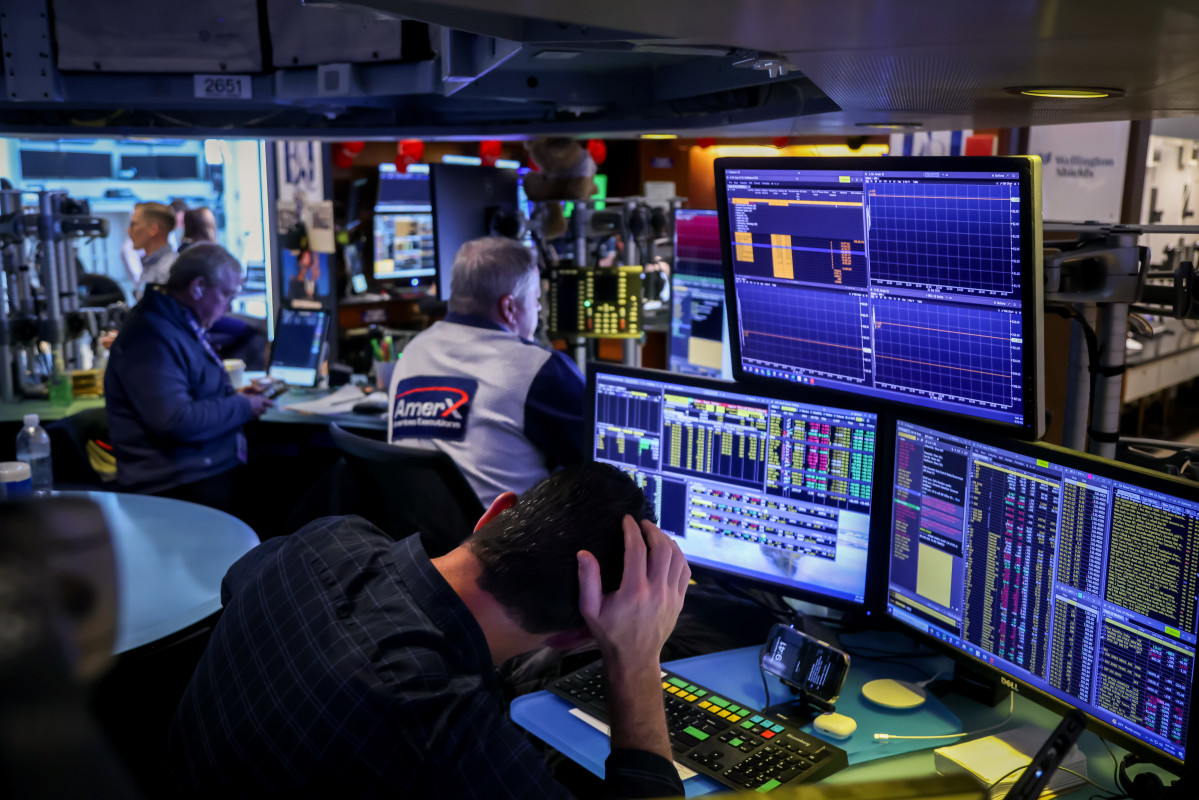Yes, there are two trading days to go in September. So anything can happen. But enough to wipe out the monthly gains for all the major indexes?
That means about 183 points off the Standard & Poor’s 500 Index, 702 points off the Dow Jones Industrial Average, more than 1,000 points from the Nasdaq and Nasdaq-100 indexes and 57 points off the Russell 2000 Index.
💵💰Don’t miss the move: Subscribe to TheStreet’s free daily newsletter 💰💵
Not likely going to happen. You need a catalyst, pretty much an astounding catalyst, to trigger the declines.
A war, maybe. A Supreme Court ruling giving Trump free reign to raise tariffs as far as they want.
Related: Why memory is key element to the AI revolution
Or maybe the collapse of a major company or bank. But by then, the financial markets would already be overwhelmed with rumors. The forces that resulted in the 1987 and 2008 crashes began to emerge months before a serious sell-off erupted.
In any event, stocks mostly slipped last week.
- The S&P 500 was down 0.3% to 6644.
- The Dow dropped 0,2% to 46,247.
- The Nasdaq was off 0.7% to 22,484.07.
Despite that, what we have, going into the last two days of September, is a stock market that is trading at or near all-time highs, dominated by companies concentrated in technology, artificial intelligence and related fields.
The top 10 companies, led by Nvidia (NVDA) , Microsoft (MSFT) and Apple (AAPL) , represented $20.7 trillion dollars, or nearly 38%, of the total market value of the S&P 500.
There’s active debate about what happens next. The S&P 500 ended Friday at 6,644, up nearly 13% on the year. For some time, that was what many analysts believed would be year-end level of the index.
Goldman Sachs (GS) and Deutsche Bank (DB) recently raised their targets to 7,000, if not by December then early in 2026.
But warnings are starting to emerge all the AI spending may be getting out of control. One even hears the word bubble uttered.
Remember 38.7%, the share of the S&P 500’s market value held by the 10 biggest companies at the end of August?

Bloomberg/Getty Images
The last time that occurred, according to an August report by GQG Partners, a Florida money manager, was in October 1970. It was followed by the bear market that ruled the rest of the decade.
The title of the report: “Playing with Fire.” The sub-headline: “The Go-Go Years relit: handle with care.”
The issue is generating enough revenue from AI to cover the huge investments.
One estimate, according to The Wall Street Journal, is that “the money invested in AI infrastructure in 2023 and 2024 alone requires consumers and companies to buy roughly $800 billion in AI products over the life of these chips and data centers to produce a good investment return.”
Related: Starbucks changes put the focus back on its customers
Bulls are still in control — for now
We’re not here to say a crash is coming. There are powerful people who believe powerfully, the market will go higher.
But markets do fall. Negative surprises — irrational exuberance/craziness and blind faith the trend won’t break — kill rallies.
The strongest S&P 500 sectors in September have been communication services (dominated by Google-parent Alphabet (GOOGL) and Meta Platforms (META) , parent of Facebook).
The weakest sector: Materials, even though its strongest component, gold-producer Newmont (NEM) , is up better than 40% on the quarter.
But the markets have seen one big bout of volatility.
The Trump Tariff Panic saw the S&P 500 fell nearly 15% from the end of 2024 to its early April lows. The recovery, which erupted quickly, was huge.
More Wall Street:
- Ray Dalio sends Wall Street a crucial $37.5 trillion message
- Tesla stock falters, but UBS points out competitive advantages
- Goldman Sachs resets S&P 500 target for rest of 2025
In fact, the S&P 500 is up 37.4% from the April low. As of Friday, the major averages are off an average 1.3% from their 52-week highs, and new highs were reached as recent as Tuesday.
But that doesn’t mean the market was given a get-out-of-jail-free card. In fact, don’t be surprised if there’s a 10% decline or more between now and, say, March from recent highs. The causes:
- The AI spending will get scrutinized much more closely and something will break.
- Tariffs will prove more bothersome than anyone expects.
- Global economic and political stresses will weigh on markets and economies.
Related: How to Protect Yourself From Scammers Offering Fake Jobs
Carnival and Nike earnings this week
This week is one of the lightest for corporate earnings. Third-quarter results will start to come in another week, Delta Air Lines reporting on Oct. 9.
Reports will come in fast and furiously the following week, with JP Morgan Chase (JPM) reporting on Oct. 14.
Three reports this week are worth noting:
- Carnival Corp. (CCL) , the big cruise line operator, due Monday.
- Investment bank Jefferies JEF reporting on Monday.
- Athletic shoe, apparel and equipment maker Nike (NKE) on Tuesday.
Carnival and most of the cruise lines have enjoyed lots of business, thanks to a solid economy. The revenue estimate is $8.1 billion, up 2.4% and earnings of $1.31, up 3.2%. Shares are up 22.9% this year.
Jefferies shares are down 14.9% for the year, but they’re up 58% from the April low.
Nike is still in turnaround mode and faces tricky consumer market. The revenue estimate: $11 billion, down 5.2%. Earnings: 27 cents down 61%.
Related: Wall Street billionaire sends one-word AI warning
#Watch #Soaring #stocks #tip #markets